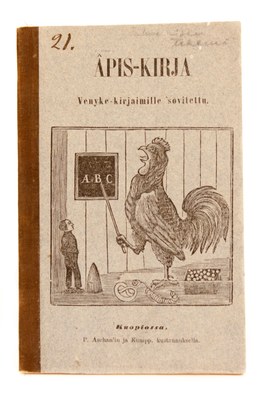Writing system developed by Wolmar Schildt

Wolmar Storbjörn Schildt (1810–1893) was the district doctor of Central Finland from 1839 to 1888. In many ways, Schildt was involved in much of the significant activity in Jyväskylä in the late 19th century. One of his goals was to enrich the Finnish language with new words. Many of his contributions remain in use today, such as tiede (science), taide (art), esine (object), henkilö (person), yksilö (individual), yleisö (audience), sivistys (education), kansallisuus (nationality), kirje (letter) and suhde (relationship).
In addition to adding words to the language, Schildt also wanted to reform the entire writing system in Finnish to resemble European languages. He created so-called “stretch writing” in which long vowels were replaced by a single vowel with a circumflex. In addition, the Latin ae and oe characters replaced the Finnish ä and ö. Even though Schildt donated new fonts to the printing houses to promote the use of his “stretch writing”, the reform was not widely accepted.
Here is an example of “stretch writing” from the newspaper Suometar on 18 April 1856 (text is in Finnish):
Jospa mâherran oikeutta sâtaisîn Jyvaeskylâen, joka asia oliskin sangen suotuisa ja toivottava tâellâe kaukana mân sydaemessae. Totta se varallisesti ja hengellisesti ylentaeisi naeitae seutuja, joka olisikin voimallinen kohoke koko Keski-Suomelle, sekae taelle nuorelle kaupunnille. Ja varmaan Suomen armollinen esivalta, joka valvô joka mâkunnan etua, myös toimittâ ajan kuluessa ûtta mâherran lâeniae Keski-Suomên.